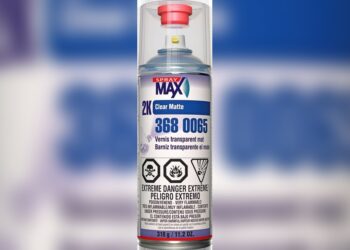Coolant shooting out of a radiator is often due to overheating or a pressure leak. A faulty radiator cap or head gasket could be the culprits.
Experiencing coolant spewing from your radiator can be alarming and indicate serious issues under the hood. This sudden expulsion of fluid is usually a red flag that your vehicle’s cooling system is under undue stress or malfunctioning. It’s a clear signal that the engine is running too hot or that there’s an imbalance in pressure that needs immediate attention.
Ignoring this could lead to more significant engine damage or a complete system failure. Quick diagnosis and repair are crucial to prevent further damage to your engine and ensure your vehicle operates safely and efficiently. Regular maintenance checks can often prevent such occurrences, but if you’re caught off guard by a geyser of coolant, it’s time to investigate and address the underlying problem without delay.

Credit: www.reddit.com
Introduction To Coolant Ejection Issues
Imagine a car’s heart pumping coolant through its system. Now picture that heart overflows. This is what happens when a vehicle experiences coolant ejection. Coolant, a vital fluid for engine temperature regulation, can sometimes shoot out of the radiator. This issue signals that something might be wrong under the hood.
Common Signs Of Coolant Problems
- Overheating Engine – The temperature gauge climbs.
- Puddles Under the Car – Green or orange liquid appears.
- Steam from Hood – Signals an overheated engine.
- Low Coolant Light – Dashboard warning illuminates.
Potential Risks Of Coolant Leaks
Coolant leaks pose serious threats to engine health. Without prompt attention, leaks can lead to:
| Issue | Risk |
|---|---|
| Engine Damage | Parts warp and break. |
| Corrosion | Metal parts rust and fail. |
| High Repair Costs | Damage affects the wallet. |
Diagnosing The Root Cause
Seeing coolant shoot out of your radiator is scary. Let’s not panic. First, we need to find out why this happens. This part is all about finding the problem. It’s like being a detective, but for cars!
Radiator Cap Inspection
The radiator cap might seem small, but it’s mighty important. It keeps the coolant in the radiator under the right pressure. If the cap is bad, coolant might escape. Here’s how to check it:
- Look at the cap. Does it have cracks or look old? If yes, it might be the problem.
- Test the cap’s pressure. You might need help from a grown-up with a tool for this.
- If the cap fails the test, it’s time for a new one.
Head Gasket Check
The head gasket is a hero that keeps the engine’s insides safe. But sometimes, it can get hurt (blown). A hurt head gasket might let coolant escape. Here’s how to spot a hurt head gasket:
- Look for white smoke from the exhaust. It’s a big clue.
- Check the oil. If it looks milky, that’s not good.
- Feel the car. If it runs rough, the head gasket might be sad.
Remember, these tests might require an adult’s help, especially with tools and checking parts.
Immediate Steps To Take
Seeing coolant shoot out of your radiator can be alarming. It’s crucial to act quickly to prevent engine damage and ensure safety. Here are immediate steps to take if you face this issue.
Engine Cooling And Safety
Turn off your car immediately. This prevents further engine damage. Wait for the engine to cool before you approach the radiator. Never open the radiator cap while the engine is hot. Steam and boiling coolant can cause severe burns.
- Shut down the engine.
- Wait for at least 30 minutes.
- Check the temperature gauge.
Leak Containment
Identify the leak source. It could be from a hose, the radiator itself, or a connection point. Place a container under the leak to catch any dripping coolant. This helps protect the environment and makes cleanup easier.
| Step | Action |
|---|---|
| 1 | Place a pan or bucket underneath. |
| 2 | Observe where the coolant comes from. |
| 3 | Avoid direct contact with the coolant. |
Once you have taken these immediate steps, seek professional help. A mechanic can properly diagnose and repair the issue.
Temporary Fixes On The Go
Experiencing coolant shooting out of your radiator can be alarming. On a busy day, you need quick, temporary fixes. Let’s explore some on-the-go solutions to manage this issue until you can seek professional help.
Radiator Stop Leak Solutions
Radiator stop leak products provide a fast solution. They seal small leaks in your radiator. Just pour the liquid into the radiator and let it work. These are the steps:
- Ensure the engine is cool.
- Shake the stop leak bottle well.
- Pour the recommended amount into the radiator.
- Run the engine to circulate the sealant.
Always choose a sealant compatible with your vehicle’s coolant type. This quick fix can get you back on the road swiftly.
Diy Sealant Options
DIY sealant options can help when commercial products aren’t available. Simple household items like pepper or egg whites might work. These are makeshift remedies to seal minor leaks.
- Pepper acts as a temporary filler.
- Egg whites can harden and seal small holes.
To use these, follow these steps:
- Open the radiator cap with the engine off.
- Add the pepper or egg white into the coolant.
- Replace the cap and start the engine.
Remember, these are only temporary fixes. Always seek professional repairs soon.
Understanding Pressure Buildup
Understanding Pressure Buildup in a car’s cooling system is vital. This buildup can lead to coolant shooting out of the radiator. It happens when heat and pressure exceed the system’s capacity. Let’s explore key components like the thermostat and water pump. Their proper operation prevents excessive pressure.
Thermostat Functionality
The thermostat controls coolant flow. It ensures the engine stays within a safe temperature range. A stuck thermostat can cause overheating. This leads to pressure buildup. Signs of a failing thermostat include fluctuating temperatures and overheating.
- Opens to cool the engine.
- Closes to increase engine temperature.
- A faulty thermostat may not open, causing pressure buildup.
Water Pump Operation
The water pump circulates coolant. It moves coolant from the radiator through the engine. A malfunctioning water pump can’t circulate coolant effectively. This leads to overheating and pressure buildup. Signs include coolant leaks and a whining noise from the pump.
| Water Pump Condition | Effect |
|---|---|
| Working Properly | Prevents overheating and pressure buildup |
| Malfunctioning | Leads to overheating and potential engine damage |

Credit: www.reddit.com
Long-term Solutions
When coolant shoots out of a radiator, it’s a sign that a serious fix is needed. Quick fixes might patch things up temporarily, but for lasting results, consider long-term solutions. These steps ensure your vehicle stays cool and runs smoothly.
Radiator Replacement
Over time, radiators can fail due to rust or damage. Replacing the radiator is a definitive solution. This process involves:
- Draining the old coolant
- Removing the faulty radiator
- Installing a new, high-quality radiator
- Refilling the system with fresh coolant
A new radiator provides peace of mind. It prevents future leaks and overheating.
Cooling System Overhaul
Sometimes, issues go beyond the radiator. An overhaul of the cooling system might be due. Steps include:
- Flushing the entire system
- Replacing worn hoses and belts
- Installing a new thermostat
- Checking and replacing the water pump if needed
An overhaul refreshes the system. It ensures each part functions well together, preventing future coolant loss.
Maintenance To Prevent Future Issues
Keeping your car’s cooling system in top shape is essential. Regular maintenance stops coolant from shooting out. It saves money and avoids roadside breakdowns.
Regular Coolant Flushes
Coolant flushes are vital for a healthy engine. They remove rust and scale deposits. These build up over time and cause overheating.
Flushes renew anti-corrosive additives. These protect your engine’s parts. Follow the manufacturer’s schedule for flushes.
- Check the owner’s manual for timing.
- Use the right coolant type for your car.
- Dispose of old coolant safely.
Radiator Cap Care
The radiator cap keeps the system pressurized. A faulty cap leads to leaks. It can cause coolant to shoot out.
Inspect the cap regularly. Look for signs of wear or damage. Replace it if needed.
| Check Interval | Action |
|---|---|
| Every oil change | Visual inspection |
| Every two years | Replace if necessary |
Keep the seal clean. A dirty seal can cause pressure loss. This results in coolant escaping.

Credit: www.reddit.com
When To Seek Professional Help
Car trouble can be a headache, especially with coolant issues. Sometimes, the problem goes beyond a simple fix. It’s essential to know when expert help is necessary.
Recognizing Complex Issues
Coolant shooting out of the radiator is a serious sign. Don’t ignore it. Look for these symptoms:
- Overheating engine – Your car’s temperature gauge spikes.
- White smoke from the hood – Indicates burning coolant.
- Odd smells – Sweet or metallic odors point to a leak.
These symptoms suggest a deeper problem. A professional should inspect your vehicle.
Finding A Reliable Mechanic
Choosing the right mechanic is crucial. Follow these steps:
- Ask for recommendations – Friends and family can suggest trustworthy mechanics.
- Check reviews online – Look for consistent positive feedback.
- Verify certifications – Ensure the mechanic is qualified.
Trust is key in car repair. Take time to find the best mechanic for your needs.
Frequently Asked Questions
Why Does Coolant Eject From The Radiator?
Coolant may shoot out due to overheating, a faulty radiator cap, or a pressurized system from a blown head gasket.
Can A Cracked Radiator Cause Coolant Expulsion?
Yes, a cracked radiator can lead to coolant leakage and eventual expulsion when the vehicle’s engine is running.
How To Prevent Coolant From Shooting Out?
Regular maintenance checks, including inspecting coolant levels and the radiator cap, can prevent unexpected coolant discharge.
What Are Signs Of Radiator Cap Failure?
Coolant leakage, engine overheating, and collapsed radiator hoses indicate possible radiator cap failure.
Is It Safe To Drive With Coolant Leakage?
Driving with coolant leakage is unsafe as it can lead to engine overheating and significant damage if not addressed promptly.
Conclusion
Dealing with coolant leakage can be daunting, yet understanding the causes and solutions is key. Remember, regular maintenance checks prevent such issues and keep your vehicle running smoothly. Don’t overlook the importance of addressing coolant problems promptly to avoid more significant engine damage.
Stay informed and proactive for a hassle-free driving experience.

















